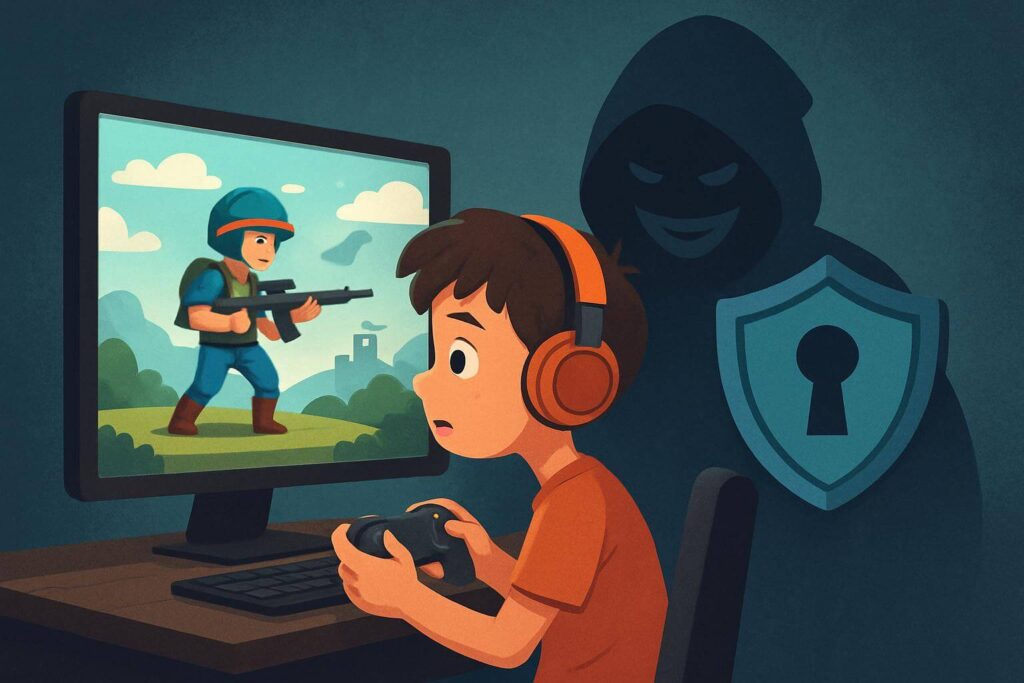
The Growing Love for Online Games Among Kids
Online games have become a daily routine for many children. From mobile apps to consoles, kids enjoy spending hours exploring new worlds and challenges. For them, it is more than just fun. It is a way to connect with friends, learn teamwork, and even build problem-solving skills.
Parents see their children laughing, competing, and making friends while gaming. In many ways, this looks harmless. Games also help improve reflexes, decision-making, and creativity. The digital age has made online play an important part of childhood. But the question remains: how safe is online gaming for kids in this world full of online crimes? The answer is not simple, as both positive and negative sides exist.
How Safe is Online Gaming for Kids in a Risky Digital World
The risks of gaming often hide beneath the surface. One major issue is cyberbullying. Many kids face insults or harassment from strangers during multiplayer matches. Hurtful words and toxic behavior can affect self-esteem and mental health. What looks like a simple chat sometimes leaves deep scars.
Another danger is online predators. Criminals may pretend to be fellow gamers to gain trust. They might ask personal questions, request photos, or lure kids into unsafe conversations. Since children lack experience, they may not notice the warning signs.
Fraud and scams also target young players. Kids may click on fake offers promising free rewards. These tricks can lead to stolen accounts, financial losses, or exposure of private data. Downloading unofficial files or mods is another unsafe habit. These often carry malware that can infect devices.
With so many hidden traps, the safety of online gaming for kids in today’s crime-filled digital world becomes a serious concern.
Steps Parents Can Take to Protect Kids Online
Safety does not mean banning games completely. Instead, it means creating a balanced and protected environment. The first step is parental controls. Most gaming platforms allow limits on time, spending, and communication. Parents can adjust settings so that children only play age-appropriate games.
Open conversations are equally important. Kids should feel comfortable sharing their experiences. Parents need to teach them never to share personal details like their school, phone number, or home address. Explaining why such rules matter builds awareness.
Strong passwords and secure accounts are another layer of defense. Two-factor authentication and privacy settings reduce risks of hacking. Parents can also encourage playing in shared spaces like the living room. This allows easy supervision without making kids feel restricted.
Setting time limits is also essential. Too much gaming can cause health problems like eye strain and lack of sleep. Balanced routines that include outdoor play, reading, and family time are healthier for children. With the right steps, online gaming becomes safer and more enjoyable.
The Balance Between Fun and Safety
How safe is online gaming for kids in this world full of online crimes? The answer lies in finding the right balance. Gaming is not the enemy. It can teach valuable skills and provide joy when used wisely. But without guidance, the risks are real and dangerous.
Parents should focus on being guides, not just rule-makers. Instead of banning games outright, they should engage with their children. Asking what games they enjoy or even playing together builds trust. This trust ensures that kids will come forward if they face bullying, scams, or suspicious behavior.
The future of gaming will only grow bigger. More children will join virtual communities. That makes awareness and education even more important. By teaching safe practices early, parents help kids build lifelong digital habits. In the end, gaming can remain a positive part of childhood without letting online crimes take control.



